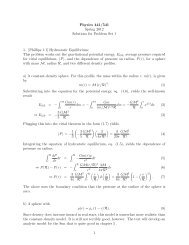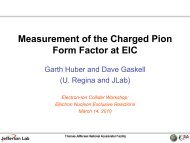Ab_init stress perturbation theory - Department of Physics and ...
Ab_init stress perturbation theory - Department of Physics and ...
Ab_init stress perturbation theory - Department of Physics and ...
You also want an ePaper? Increase the reach of your titles
YUMPU automatically turns print PDFs into web optimized ePapers that Google loves.
Strain <strong>perturbation</strong> for metals<br />
• Thermal smearing <strong>of</strong> the Fermi surface must be introduced for stability<br />
• In RF calculations, a b<strong>and</strong> <strong>of</strong> partially-occupied states around ε F is<br />
treated by f<strong>init</strong>e-temperature <strong>perturbation</strong> <strong>theory</strong> in the Sternheimer<br />
solution, <strong>and</strong> only the completely unoccupied states are found by the<br />
conjugate-gradient method (1)<br />
(1)<br />
• For strain, a first-order Fermi energy ε must be introduced (2)<br />
F<br />
(1)<br />
• ε F<br />
enters into the Sternheimer self-consistency process<br />
• Convergence can be rather slow<br />
(1)<br />
ε F<br />
– Only simple mixing is presently used to iterate<br />
– Coupling to the first-order potential iteration through Anderson or CG mixing<br />
may help<br />
(1)<br />
ε F<br />
• Is needed for the Q = 0 interatomic force constant calculations<br />
needed to get the relaxed-atom elastic tensor for metals?<br />
(1) S. de Gironcoli, Phys. Rev. B 51, 6773 (1995)<br />
(2) S. Baroni, S. de Gironcoli, <strong>and</strong> A. Dal Corso, Rev. Mod. Phys. 73, 515 (2001)




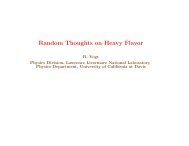
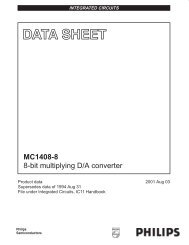

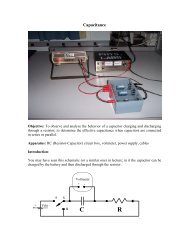


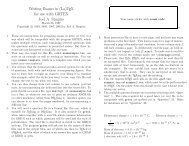
![More Effective C++ [Meyers96]](https://img.yumpu.com/25323611/1/184x260/more-effective-c-meyers96.jpg?quality=85)


